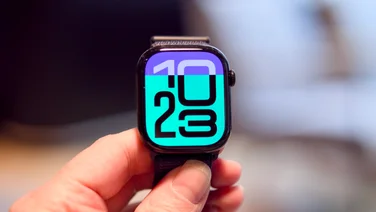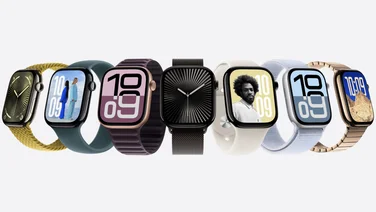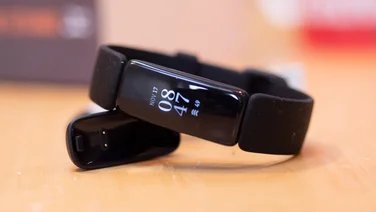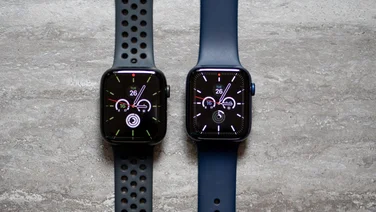To help us provide you with free impartial advice, we may earn a commission if you buy through links on our site. Learn more





- 5-day battery life
- Comfy to wear
- Easy to use
- No built-in GPS
- No ANT+ support
Fitbit has made a name for itself with its family of stylish, straightforward fitness wearables, and now there’s another one to add to the list – the Charge 2. Taking the place of the Fitbit Charge and Charge HR, the Charge 2 is now the cheapest heart-rate-equipped wearable in Fitbit’s 2016 line-up.
Fitbit Charge 2: Design
Previously, Fitbit’s range included both the standard Fitbit Charge and the heart rate monitor-equipped Fitbit Charge HR. The only difference between the two was that the HR model added a heart rate monitor and £20 to the overall price. Now, things are far simpler, and in their place stands just one device – the Charge 2.
The Charge 2 adds some welcome refinements to the design of the original model. You get a markedly comfier rubber strap, and the display has been swapped out for a larger OLED panel which, incidentally, seems to have been plucked straight from the Fitbit Alta. The Charge 2’s new-found customisability is a sight for bored eyes, too. If you’re not taken by the stock strap, you can quickly and easily replace it with any colour you fancy, simply by unhooking a couple of metal clips.
Fitbit Charge 2: Display and controls
The move to a larger display is long overdue. While we weren’t especially taken with the Charge HR’s tiny display, the Charge 2 is a palpable improvement. You still only get the one metric displayed at any one time, but the time and date now stay fixed to the top of the screen, and tapping the screen cycles through the number of steps taken, your heart rate, distance travelled, calorie burn, stairs climbed, active minutes and hourly activity. You can also now receive text and call alerts direct to your wrist.
Controlling the Charge 2 couldn’t be simpler. Thankfully, there’s still just the single button – simplicity is a big part of the Fitbit appeal – and this activates any one of the various activities on the Charge 2 such as starting a run, setting a stopwatch, or breathing exercises.





Fitbit Charge 2: Performance
Yes, you read that correctly: breathing exercises. Rather like Apple’s watchOS 3, the latest Fitbit wearables have added meditation to the list of available activities. Tap the screen to select two or five minutes, and the Charge 2 will instruct you when to breathe in and out according to your real-time heart rate data. The theory is that you’ll finish the session in a calmer, more zen-like state.
All the standard fitness tracking stuff is present and correct, too. The Charge 2 records all your steps and calories burned, and gives you a prod now and again if you’ve been sitting still for too long. In my experience, the heart rate tracking was pretty reliable – my pulse tended to drop down to around 60 at rest, and quickly spike over 140 once I started bounding up flights of stairs.





As there’s no built-in GPS, you’ll need to have your phone in your pocket if you want to track your runs accurately. Tap the screen and you can cycle through heart rate, distance, pace, average pace, calories burned and steps, and the time elapsed is displayed just above each. At the end of your run, you get a quick onscreen summary detailing the average pace, heart rate and how many metres you’ve climbed. Want more data? Then head over to Fitbit.com or fire up the app and you’ll get a more complete view of your most recent workouts.
This gives you a welcome overview of your workouts, rather like Runkeeper and Strava, mapping your circuit and giving you an at-a-glance view of your pace, heart rate, heart rate zones and calories burned. If you happen to be running without your phone, say in a five-a-side football match, then Fitbit fills in the details based on your heart rate and steps. If you can’t be bothered to always have your phone jiggling about in a back pocket, then it’s a nice touch.
And the app’s biggest appeal? Yes, you get to compete with all your other Fitbit-owning friends, workmates and gym rivals. Even the daily walk to and from the train station can now earn you those all important extra steps – and that’s surprisingly addictive, even for broadly uncompetitive types such as myself.





Fitbit Charge 2: Battery life
It might have a larger screen, but the Charge 2 still keeps jogging along for around five days before running empty. One nice feature is that, even if you haven’t got the Charge 2 on your wrist, Fitbit will send you a reminder via email. If you tend to take off the Charge 2 during the working day, then it’s nice to know that you won’t end up with a dead wearable when you go for your lunchtime or post-work run.
If you’re wondering why the Charge 2 is so impressively long-lived, then here’s a reminder: it has no built-in GPS. If that’s a must-have – for instance, you’d rather not run the risk of smashing your expensive new smartphone – then you’ll need to up your budget and look at something like the Fitbit Surge.
Yes, you’ve probably guessed what I’m about to say next. Fitbit has conjured up yet another proprietary charge cable for the Charge 2. Lose it, and you’ll be shelling out £17 for a replacement cable.





Fitbit Charge 2: Verdict
The Fitbit Charge 2 gets a lot right. Do you want a simple, hassle-free and long-lasting wearable? Then the Charge 2 ticks all the boxes. The lack of in-built GPS and compatibility with external ANT+ sensors might push some people towards pricier rivals such as Garmin Vivoactive HR, but otherwise it’s the casual fitness fan’s perfect training partner.







